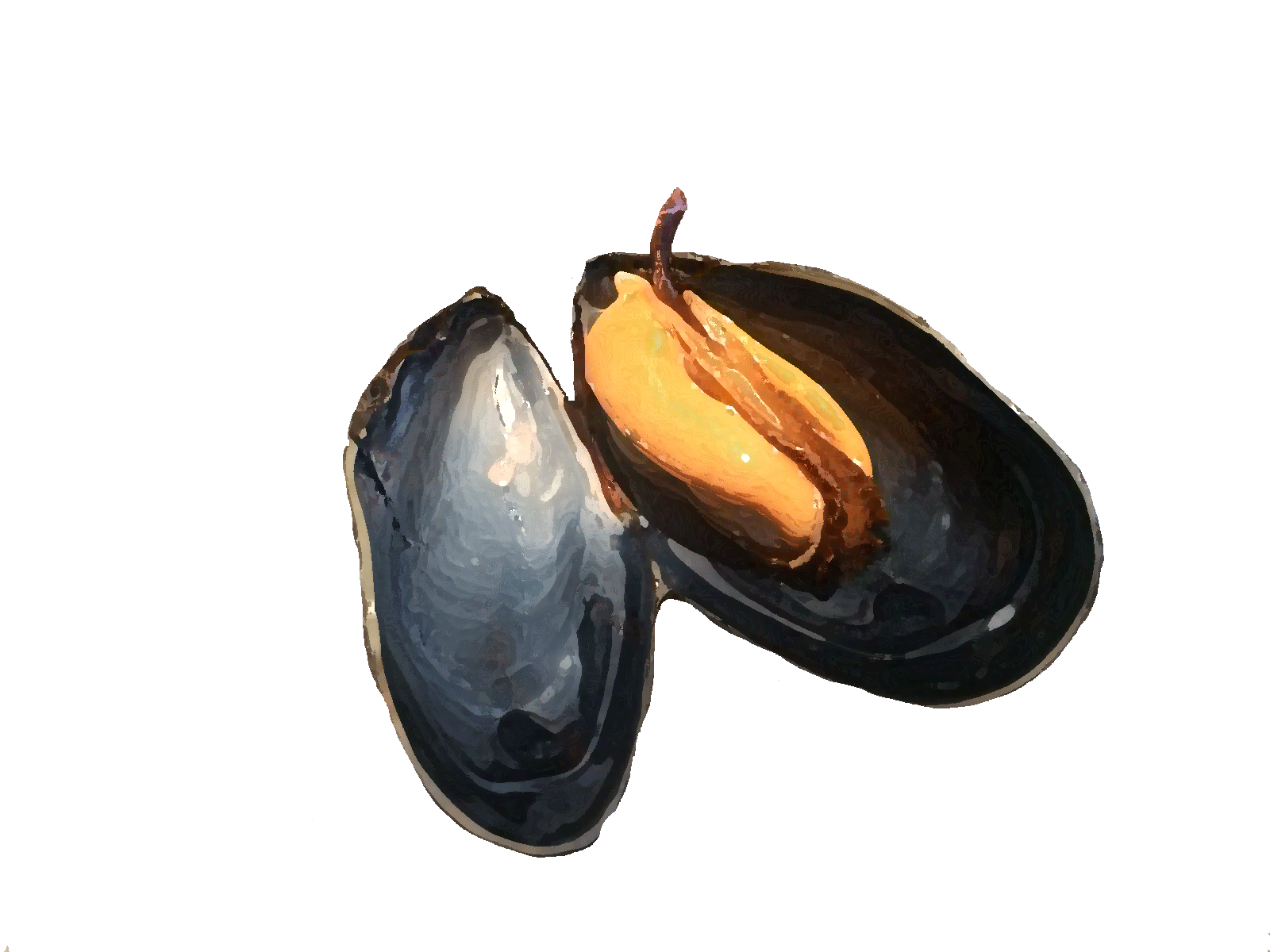The research presented here examined how mussels behave in different seasons and how their interactions with each other are affected by changes in the natural environment. Why is it that a mussel responds differently when environmental conditions are different. Is that an effect of food, of temperature or of food quality? Mussels live in groups, are site-specific and their behavior, growth and survival is influenced by the environment, such as how much food is available, the temperature of the water and how strong the current is. The density in which the mussels live is an important factor in this. At low density, they get in each other’s way less and there is more food to distribute. A high density actually creates more competition among the mussels, but on the other hand, the mussels are better protected from being washed away or from being eaten by crabs, for example.
In an experiment, we examined whether the advantage and disadvantage of living in high density is constant or if it varies throughout the year. Here we expected to find that in summer when conditions for mussels are good (plenty of food, moderate temperatures and little current), growth is most important and that mussels perform better at low density than at high density. But in winter when conditions are poor (little food, low or high temperatures and strong currents) we expect mussels to survive better precisely when they are densely packed, under those conditions low density would then be disadvantageous.
To investigate this, we placed mussels in 10 different densities in cages in shallow seawater and after 1 month measured how well they had grown, how they moved and had and how many mussels survived. This experiment was repeated seven times over the course of a year. Environmental conditions were measured continuously throughout this period (Fig. 1).

Fig. 1 The environmental conditions during the 7 experiments (each lasting about 1 month). Top graph is the water temperature, middle graph is the amount of chlorophyll a (which is an indication of the amount of food) and the bottom graph is the turbidity, which says something about disturbance (stirring up sediment) and about food quality.
This yielded interesting results. In summer, the mussels were most active. They tangled together more and their interactions were stronger. But as winter approached and it got colder, the mussels became less active. They clumped together less, grew slower, and at the lowest temperatures, the number of mussels that survived when they were close together decreased. What was surprising, and different from what we expected, was that in summer under the most favorable conditions, the mussels’ chances of survival were better if they were densely packed. But in winter, when conditions were difficult, they survived better if they were like more spread out. This pattern shows a clear seasonal trend (Fig. 2).

Fig. 2 interaction between mussels: the higher above the dotted line the better mussels perform in high density (positive interactions: they benefit from each other) below the dotted line, on the contrary, there is competition between mussels (they suffer from each other).
This pattern can be explained, by looking at the behavior of the mussels. When mussels are active (as in summer), they are constantly looking for an advantageous place to feed. In the process, mussels crawl toward each other and climb on top of each other to get as high as possible above the bottom. Mussels that are alone cannot exhibit this behavior and will have a harder time accessing food, and in the process they may also have difficulty rising from the sediment. They are then buried, so to speak, and therefore perform worse. So there is more competition for food in the summer – we see that too, because the condition of the mussels is then lower at high densities, but there is also more positive cooperation so survival at high densities is also higher. Mussels benefit from each other for their survival.
Thus, to better understand the functioning of mussels, it is important to take into account their behavior, and that behavior is different in winter than in summer.
The above has been published as: Capelle JJ, Hartog E, Wilkes T, Bouma TJ (2023) Seasonal variation in the balance and strength of cooperative and competitive behavior in patches of blue mussels. PLoS ONE 18(10): e0293142. https://doi.org/10.1371/journal.pone.0293142

